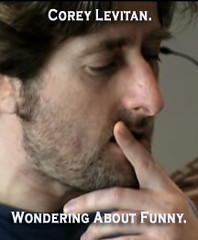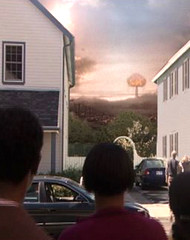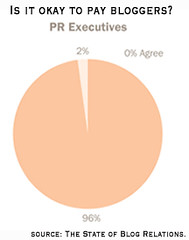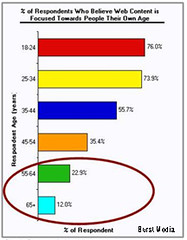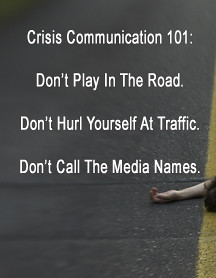After reading a few chapters of “Accidental Branding” by David Vinjamuri, I was perplexed. Could it be that a former brand manager at Johnson & Johnson, Coca-Cola and marketing guru for recent Google-acquisition DoubleClick and Save.com, wrote a book that is both gratifying and grasping at the same time? Exactly so.
“Accidental Branding” is gratifying in that the research and interviews are worthwhile; the writing is vivid and engaging; and the case studies — John Peterman, Craig Newmark, and Roxanne Quimby (among them) — timely. The modest cover price of $16.47 for Accidental Branding via Amazon works.
via Amazon works.
Without question, Vinjamuri succeeds where so many other business writers fail — by bringing passion to pages of businesses. He does it with flair and style, creating case studies that you actually care about. I love that about the book, enough so to recommend it. Chances are that you will love the book, enough so that you might fall in love with it like Diane K. Danielson did.
But there is something troubling too. “Accidental Branding” seems to drift into a trend that is becoming troublesome. In attempting to dispel the myths of what they teach in business school as being wrong or incomplete (which is largely correct), the author presents solutions that are not strong enough to unseat traditional teachings despite finding case studies to back up his argument.
It makes me wonder. What are we doing nowadays, anyway? Social media is becoming the boom and bane for business in ways that very few have ever expected. And when books are written with the Internet communication in mind, they tend to forget their intent and fill pages with more inspirational ideas than concrete solutions in the way that books like In Search of Excellence used to do.
used to do.
There’s nothing wrong with that, but it makes one wonder if the next wave of entrepreneurs are somehow missing out because the business and marketing books being written today are chock full of case studies designed to prove some clever ideas. For example, Vinjamuri presents six: sweat the small stuff, pick a fight, be your own customer, be unnaturally persistent, build a myth, and be faithful.
The fifth is especially interesting to me because Kevin Goodman recently asked me about how viral marketing myths might mirror the urban legend phenomena, something Chip Heath, associate professor at Stanford University, wrote about four years ago.
“Creating the mythology for your brand means that you have to understand both
the narrative and how it will be spoken and shared…,” writes Vinjamuri. “… By crafting this story carefully, you will make a better case for your business than
any presentation or advertisement possibly could.”
While there is certainly some truth to the concept that storytelling works (better than bullets anyway) because it’s memorable, creating a mythos for your brand can have some unintended consequences that run afoul in what I call the Fragile Brand Theory . Specifically, a mythos can sometimes overtake the sustainability of the brand and when that happens … they risk collapse. And yet another pitfall that can transpire a well-positioned myth comes straight from the urban legend department: over time, the point of origin becomes expectedly fuzzy and may even be stolen away by someone who demonstrates your story better then you do.
“Mary Worth … Mary Worth … Mary …” ... You get the idea. The story variations have overshadowed the point of origin.
Sure, I suspect Vinjamuri might think I’m missing “rule six,” which reminds entrepreneurs to remain faithful to their brands. He’s right, but sometimes brand busting moments are not manageable as several dozen companies can attest. Brands are much more fragile than that.
Even so, and I cannot stress this enough: where I part ways on some conclusions presented by Vinjamuri, I can appreciate excellent storytelling around some very interesting break-the-mold brands. They are often not covered enough, and Vinjamuri presents those as masterfully as one might suspect from someone who works on Starwood Hotels, among others.
Now the only question that remains is whether his “Accidental Brands” can move beyond the moment and capture its own mythos. We shall see. I hope so.

“Accidental Branding” is gratifying in that the research and interviews are worthwhile; the writing is vivid and engaging; and the case studies — John Peterman, Craig Newmark, and Roxanne Quimby (among them) — timely. The modest cover price of $16.47 for Accidental Branding
Without question, Vinjamuri succeeds where so many other business writers fail — by bringing passion to pages of businesses. He does it with flair and style, creating case studies that you actually care about. I love that about the book, enough so to recommend it. Chances are that you will love the book, enough so that you might fall in love with it like Diane K. Danielson did.
But there is something troubling too. “Accidental Branding” seems to drift into a trend that is becoming troublesome. In attempting to dispel the myths of what they teach in business school as being wrong or incomplete (which is largely correct), the author presents solutions that are not strong enough to unseat traditional teachings despite finding case studies to back up his argument.
It makes me wonder. What are we doing nowadays, anyway? Social media is becoming the boom and bane for business in ways that very few have ever expected. And when books are written with the Internet communication in mind, they tend to forget their intent and fill pages with more inspirational ideas than concrete solutions in the way that books like In Search of Excellence
There’s nothing wrong with that, but it makes one wonder if the next wave of entrepreneurs are somehow missing out because the business and marketing books being written today are chock full of case studies designed to prove some clever ideas. For example, Vinjamuri presents six: sweat the small stuff, pick a fight, be your own customer, be unnaturally persistent, build a myth, and be faithful.
The fifth is especially interesting to me because Kevin Goodman recently asked me about how viral marketing myths might mirror the urban legend phenomena, something Chip Heath, associate professor at Stanford University, wrote about four years ago.
“Creating the mythology for your brand means that you have to understand both
the narrative and how it will be spoken and shared…,” writes Vinjamuri. “… By crafting this story carefully, you will make a better case for your business than
any presentation or advertisement possibly could.”
While there is certainly some truth to the concept that storytelling works (better than bullets anyway) because it’s memorable, creating a mythos for your brand can have some unintended consequences that run afoul in what I call the Fragile Brand Theory . Specifically, a mythos can sometimes overtake the sustainability of the brand and when that happens … they risk collapse. And yet another pitfall that can transpire a well-positioned myth comes straight from the urban legend department: over time, the point of origin becomes expectedly fuzzy and may even be stolen away by someone who demonstrates your story better then you do.
“Mary Worth … Mary Worth … Mary …” ... You get the idea. The story variations have overshadowed the point of origin.
Sure, I suspect Vinjamuri might think I’m missing “rule six,” which reminds entrepreneurs to remain faithful to their brands. He’s right, but sometimes brand busting moments are not manageable as several dozen companies can attest. Brands are much more fragile than that.
Even so, and I cannot stress this enough: where I part ways on some conclusions presented by Vinjamuri, I can appreciate excellent storytelling around some very interesting break-the-mold brands. They are often not covered enough, and Vinjamuri presents those as masterfully as one might suspect from someone who works on Starwood Hotels, among others.
Now the only question that remains is whether his “Accidental Brands” can move beyond the moment and capture its own mythos. We shall see. I hope so.











